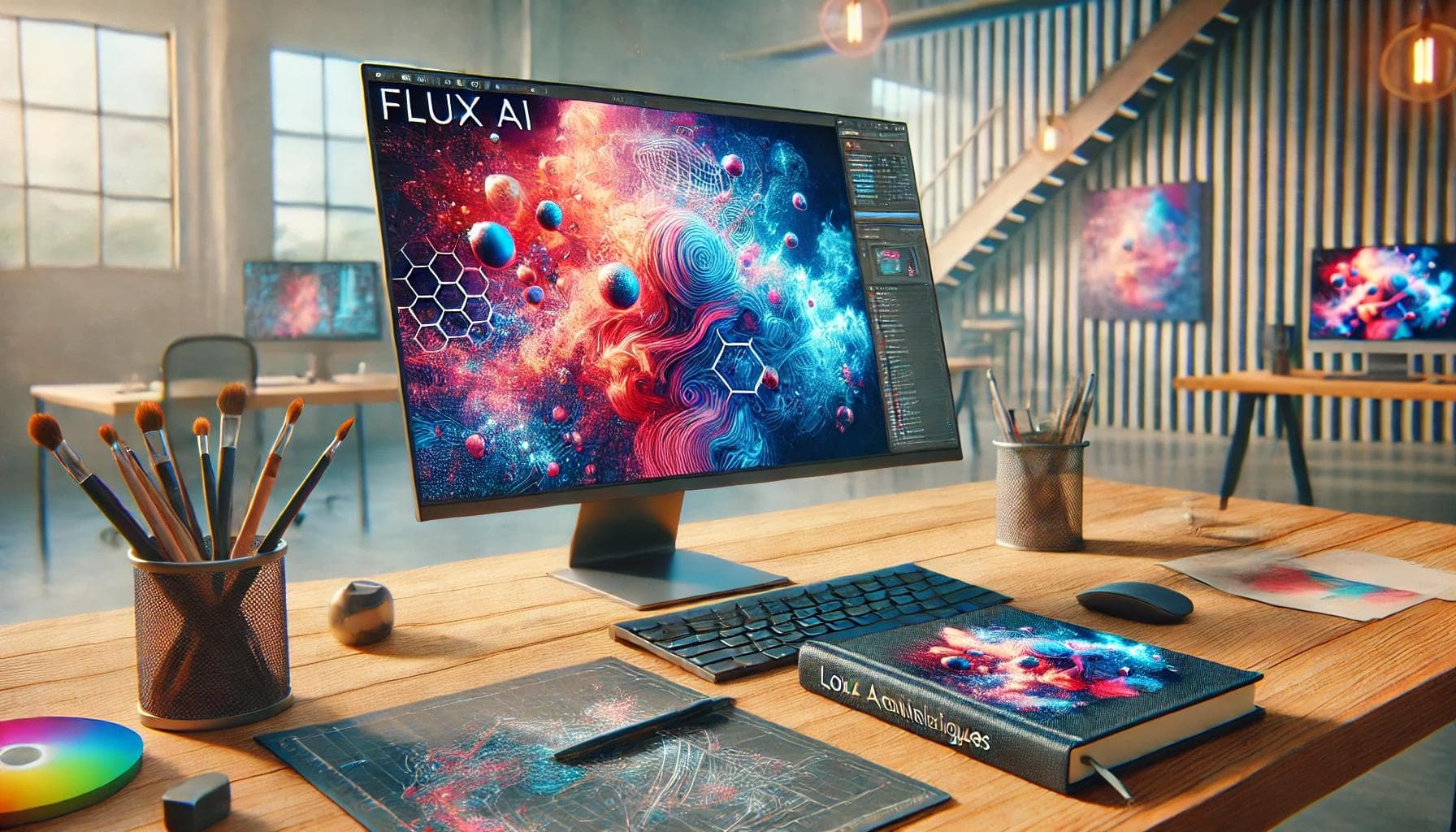Master AI Image Generation: How to Use LoRA with FLUX AI
FLUX AI, a state-of-the-art tool for AI image generation, brings unparalleled realism to digital art. When combined with LoRA (Low-Rank Adaptation) models, the potential for creativity expands exponentially. This guide walks you through every aspect of using LoRA with FLUX AI, offering tips, techniques, and best practices for achieving stunning results.
What Are LoRA and FLUX AI?
LoRA (Low-Rank Adaptation) is a method for fine-tuning large language models without requiring full retraining. When applied to FLUX AI, known for its realistic and lifelike image generation capabilities, LoRA allows for creating specific styles, characters, and artistic effects. This fusion offers endless possibilities for customization and creativity.
Setting Up Your Software Environment
To begin using LoRA with FLUX AI, follow these steps:
Install SD Forge WebUI: Download the WebUI for FLUX AI models from SD Forge GitHub Repository.
Download FLUX AI Models:
Install Required Tools:
- StabilityMatrix for easier management: StabilityMatrix GitHub
- 7-Zip for file extraction: 7-Zip Download
Hardware Requirements:
- GPU with at least 8GB VRAM (16GB recommended).
Detailed Steps for Using LoRA Models with FLUX AI
Obtaining LoRA Models
Visit Civitai.
Use search filters to find FLUX-compatible LoRA models.
Download LoRA files (.safetensors or .pt format).
Installing LoRA Models
Locate the SD Forge WebUI installation directory.
Navigate to the webui/models/Lora folder.
Create a subfolder named "Flux" for organization.
Place the downloaded LoRA files in this subfolder.
Generating Images with LoRA in Forge WebUI
Launch SD Forge WebUI and open the "Stable Diffusion" tab.
Select the FLUX checkpoint (e.g., flux1-dev).
Scroll to the "LoRA" section and click "Add LoRA" to select your model.
Adjust the LoRA weight (0.5 to 1.0 recommended).
Enter a text prompt, including the LoRA trigger word if specified.
Configure image parameters (dimensions, sampling method, steps).
Click "Generate" to create your image.
Advanced Techniques for LoRA and FLUX AI
Combining Multiple LoRAs
- Add multiple LoRAs in the WebUI and adjust their weights.
- Experiment with combinations for unique styles.
Using LoRA with Negative Prompts
- Use the negative prompt box to exclude unwanted elements.
- Set LoRA effects with negative weights for refinement.
Fine-Tuning LoRA Effects
- Adjust LoRA weights to control intensity.
- Use the "CFG Scale" slider for better prompt adherence.
- Experiment with sampling methods like Euler a or DPM++ 2M Karras.
Popular FLUX LoRAs and Their Uses
Flux Disney: Creates Disney-style characters. Trigger: "flux_disney" | Weight: 0.7–0.9
Flux Realism: Enhances photorealism. Trigger: "flux_realism" | Weight: 0.6–0.8
Flux Yarn Art: Produces handcrafted textures. Trigger: "flux_yarn" | Weight: 0.8–1.0
Flux Aquarell Watercolor: Generates watercolor-style images. Trigger: "flux_watercolor" | Weight: 0.7–0.9
Troubleshooting Common Issues
LoRA Not Affecting the Image:
- Ensure the LoRA is properly loaded.
- Increase the LoRA weight.
- Use the correct trigger word.
Out of Memory Errors:
- Reduce image size or batch count.
- Enable half-precision (fp16) mode.
- Close other memory-intensive programs.
Unexpected Results:
- Refine your prompt to remove conflicting elements.
- Adjust the CFG scale.
- Try different sampling methods.
Training Your Own LoRA for FLUX AI
Dataset Preparation
- Use 15–30 high-quality images representing your desired style.
- Create corresponding text files with detailed descriptions.
Training Steps
Use kohya_ss GitHub for training scripts.
Edit configuration files for your dataset, learning rate, and training steps.
Monitor loss values during training to prevent overfitting.
Best Practices for LoRA Training and Usage
- Use diverse datasets for versatility.
- Include variations in poses, expressions, and environments for character LoRAs.
- Test with different weights and prompts to explore full capabilities.
- Share your LoRAs with the community for feedback.
Conclusion
By mastering the combination of LoRA and FLUX AI, you unlock endless possibilities in AI-generated art. Whether it’s photorealism, unique styles, or custom characters, this technology empowers creators to bring their visions to life.
Generate Images, Chat with AI, Create Videos.
No credit card • Cancel anytime

